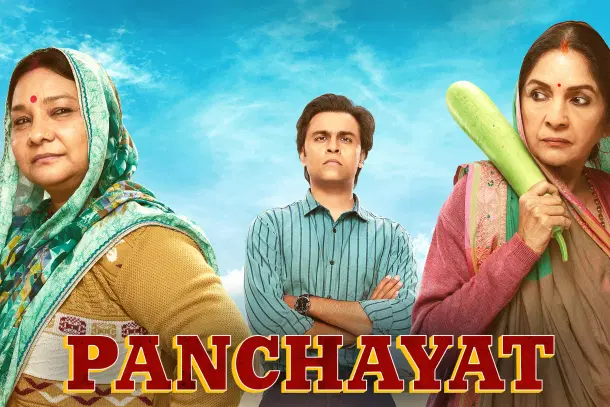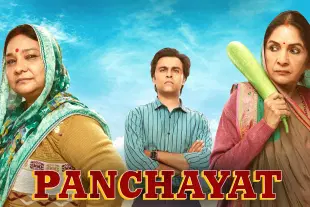Commentary
Panchayat: And Building a Case for India’s Dehat
Prem Ansh Sinha
Jul 27, 2025, 09:59 AM | Updated Jul 28, 2025, 11:51 AM IST
Save & read from anywhere!
Bookmark stories for easy access on any device or the Swarajya app.


With multiple critical acclaim, positive viewer feedback, and numerous awards, ‘Panchayat’, by The Viral Fever (TVF), stands as one of the most well-received Indian shows so far. Set in the backdrop of Phulera, a village in Uttar Pradesh, it follows the story of Abhishek Tripathi, an engineering graduate, who, on being unable to get placed, has no option but to join the Phulera gram panchayat as its secretary. And on realising the muddy and preposterous dealings in his job, the newly minted secretary resolves to appear for the Common Aptitude Test (CAT), in order to join any management institute that can help him get placed.
The show presents a William Dalrymple-style exotic look to the urban audience about the rural dehat. Viewers are greeted with bright and warm colours, and perhaps, a yearning for the past. This is very evident when Abhishek’s friend, working in a high-paying job, visits the village; he finds everything colourful and amusing. ‘Panchayat's’ dehat has an extraordinary element of romanticism, where any resistance to it is followed by subsequent amalgamation. Bureaucratic inefficiencies are made endearing. Manju Devi, the de jure pradhan, is nothing more than a rubber stamp for her husband, Brij Bhushan, who, despite the 73rd Amendment to the Constitution of India, assumes the non-existent position of pradhan pati (pradhan's husband). Government schemes are distributed as favours by the Pradhan for the eastern block's allegiance. Much to the astonishment of the audience, this has been accepted very normally by the villagers. Despite having a washroom at his place, the de facto pradhan, Brij Bhushan, chooses to openly defecate in the agricultural land in the very first episode of season one, and the sequence has been filmed as nostalgia.
Rural and Urban Dehat
Public discourse about villages rarely addresses lower-level governance. Mohandas K. Gandhi's idea of ‘gram swaraj’ (village republic) may seem ridiculous owing to the steep deterioration in the quality of public life. During non-agricultural seasons, when the farmers are unemployed, we see a steep rise in murders, robberies, and dacoities. The recent upsurge of such cases in Bihar is a sharp reminder of it. Witch hunting is still prevalent in tribal belts despite various laws to combat it. Crimes often go unreported, especially, in the case of women. Lack of education remains the most fundamental underlying cause, which makes one wonder—despite all its positive attributes, is the ‘gram swaraj’ not overly teleological?
Gandhi answers this question himself. He published in Young India, “The cities are capable of taking care of themselves. It is the village we have to turn to. We have to disabuse them of their prejudice, their superstitions, their narrow outlook, and we can do so in no other manner than that of staying amongst them and sharing their joys and sorrows and spreading education and intelligent information among them.” But even without reaching this state, rural dehat carries in itself a false sense of cultural superiority. There is a strong resistance to change. Abhishek Tripathi is often mocked for his basic expectations in the show and is forced to swim by the stream. This resistance to change takes the form of urban dehat, when the same people migrate to urban centres, expecting others to be subservient to their supposedly simple, pious, and moral habits. One must understand that dehat, which was once the cradle of wisdom, simplicity, and a region that actualised respect, has been abused by its own doing today. The word no longer solely denotes rural villages, but has grown up to be a state of mind. Linguistic and regional chauvinism in metro cities and urban centres is one such instance of urban dehat.
While the critical thinkers may call this an act of encouraging casteism, it is imperative to note how it is the very dehat that perpetuates their foes of gender stereotypes and rigid caste structure. Interestingly, this same utopian idea of rural regions subsequently helps gather votes on populist rhetoric of ‘us’ versus ‘them’. Chandan Mitra writes in reference to normalisation of dehat, “...copious lip service is often paid to villages and their residents by elected representatives cutting across party lines. It is a sacrilege in Indian politics not to genuflect before the God called rural population.” Speak up against dehat and watch your political career go down.
Chandan Mitra further writes, “The average Indian village bristles with social injustice; consequently, violence is the norm rather than the exception for settling disputes.” We find Abhishek Tripathi involved in gun fights, punches, getting death threats, and getting used to it. In the very beginning of season four, too, his college friend points out how it does not befit him. But Abhishek considers this an acceptance of his life in the village. Violence is the norm; resisting it, a rebellion. Moreover, we can clearly say that Abhishek is the representation of the conflict between resistance and acceptance of dehat. Around the end of season three, we found him narrowly escaping from being shot, and in season four, he was punched to the point of unconsciousness; and later, we find him throwing one punch to the very same henchman of the antagonist politician. At times, we find him so involved with the rural drama that his ambitions seem to choke. Leaving the village for a better life is taken as a betrayal of the very people he once thought of as home. Although such sequences are portrayed as humorous, they do carry a deeper idea about dehat.
A Case for Panchayat
Even today, the soul of India lies in dehat. And perhaps, the urban dwellers, who are tired of the hours-long traffic jams and a monotonous life, may see the show as a representation of the ultimate euphoria and satisfaction. This escapism tends to blur the lines between reality and fiction. While there is no doubt about how the show is an innocent attempt to entertain its audience, there are always underlying political themes that deserve some thought by the audience. By normalising the very attributes of dehat that keep rural India behind, ‘Panchayat’ has failed in its social responsibility to tell the audience that all is not well in rural India.
This is not an essay against dehat or the show, but it strives to open up a conversation on why dehat needs to be taken away from dehat. And of course, for the audience, ‘Panchayat’ remains a heart-warming show that offers a breath of fresh air. In some way, it also makes one realise what an ideal village would be like, had it not been for what is there.





